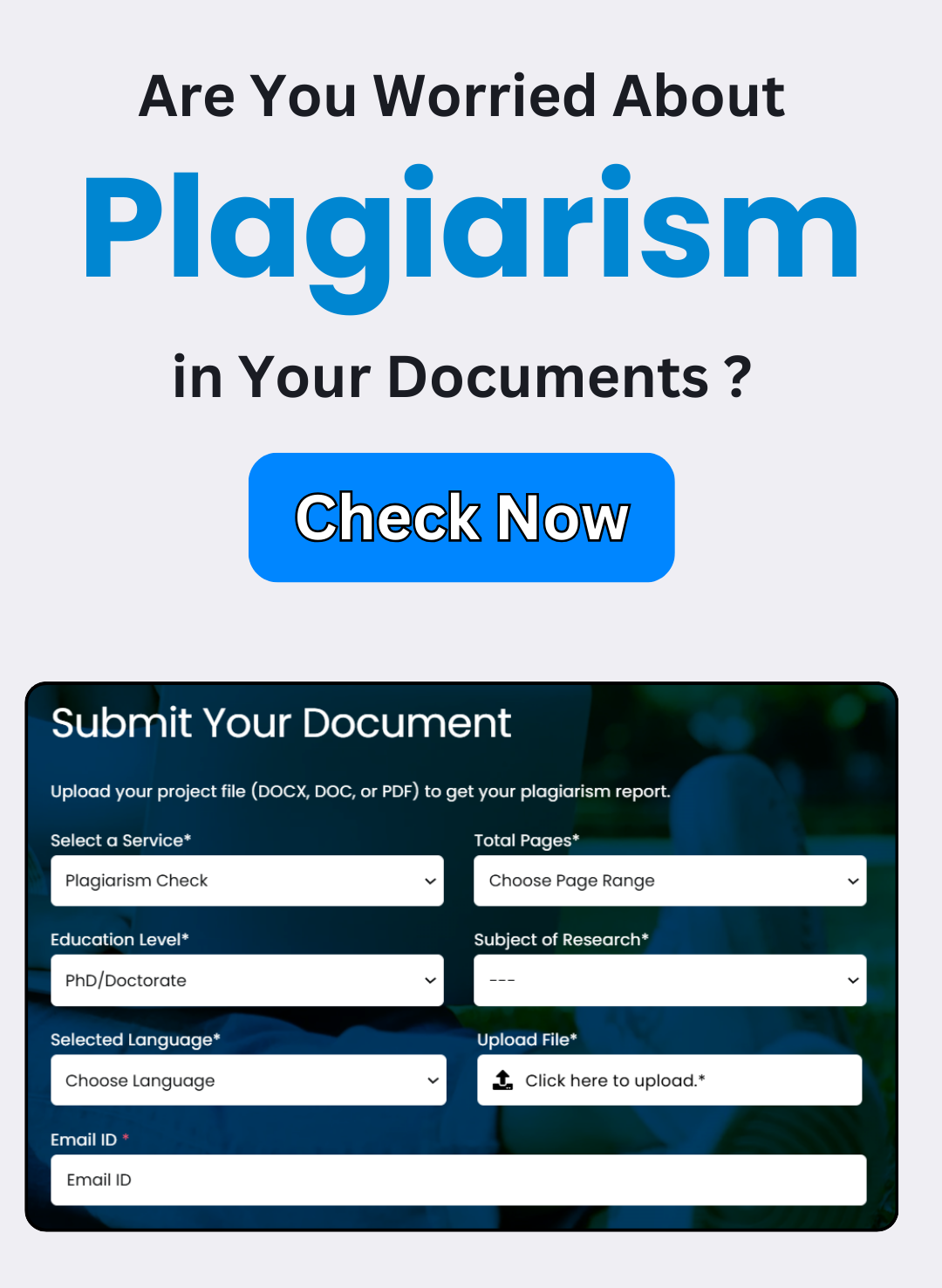How to Interpret Your Turnitin Report: A Guide for Indian Students and Academics
Introduction
For students and academics in India, ensuring that your work is free of plagiarism is crucial to maintaining academic integrity. Turnitin is one of the most widely-used plagiarism detection tools globally, helping students and researchers ensure their work is original. However, interpreting Turnitin reports can be confusing for many, especially for those who are new to using plagiarism detection tools.
In this blog, we will provide a step-by-step guide on how to interpret your Turnitin report, so you can better understand your similarity score, address any flagged sections, and ultimately submit a plagiarism-free piece of work.
What Is a Turnitin Report?
A Turnitin report provides a detailed analysis of your document’s similarity to other existing works. The report will show areas where your document matches content from Turnitin’s vast database, which includes journals, research papers, student papers, and web content.
The similarity score in the Turnitin report indicates the percentage of your work that matches other sources. It’s essential to remember that this score doesn’t always indicate plagiarism—it simply shows areas where your document overlaps with others.
Key Components of a Turnitin Report
Understanding the key sections of a Turnitin report is essential to interpreting it correctly. Here are the main components:
-
Similarity Score
This is the percentage that represents the amount of your text that matches other sources. A higher score indicates a higher level of similarity. However, a high similarity score doesn’t automatically mean plagiarism—it’s important to look at the details. -
Matched Sources
The Turnitin report will list the sources where matching text was found. This may include other student papers, journals, articles, or online content. The report will provide links to these sources, so you can review them and determine if the match is appropriate. -
Highlighted Text
Turnitin highlights the sections of your document that match other sources. These highlights make it easy to see where the issues lie. Each section will be linked to the corresponding source from the Turnitin database. -
Source List
The report will also include a list of the sources where matches were found. This helps you identify whether the similarity is from a journal article, a website, or another student’s paper.
How to Interpret Your Turnitin Similarity Score
-
Understanding Your Similarity Score
Your similarity score is one of the first things you’ll notice in the Turnitin report. Here’s how to interpret it:-
0-10%: Generally considered acceptable in academic writing, depending on the type of work. However, always review the highlighted sections to ensure proper citation.
-
10-30%: A moderate score that indicates there may be areas where you’ve used existing ideas or sources. You should review the highlighted sections and ensure they are either paraphrased correctly or properly cited.
-
30-50%: A higher score that requires careful review. Ensure that any matching content is properly cited or rephrased.
-
50% and above: This is a cause for concern, as a high percentage suggests significant overlap with other sources. You must revise these sections immediately, either by paraphrasing or adding proper citations.
-
-
Identifying What Is Flagged
Look at the highlighted sections to identify whether the similarity is from commonly used phrases, direct quotes, or paraphrased content. Some similarities may be unavoidable (such as well-known scientific terms or quotes), but others might need to be reworded or cited.-
Direct Quotes: Make sure any quoted material is properly enclosed in quotation marks and cited.
-
Common Phrases: Some common phrases or terminology might appear flagged, but they don’t count as plagiarism if they’re used in the right context.
-
Paraphrased Text: If you’re paraphrasing another author’s work, make sure it’s reworded significantly and cited properly.
-
-
Examine the Source List
Review the source list provided by Turnitin to see where the similarities are coming from. If the sources are credible academic journals or books, then the similarity might be valid. However, if the sources are other student papers or websites, you’ll need to be more cautious and ensure proper citation.
How to Address Issues in Your Turnitin Report
-
Revise Highlighted Sections
For any sections of your document that are flagged for similarity, revise them by either paraphrasing, summarizing, or providing proper citations. You may also want to rephrase sentences that are too close to the original source. -
Cite Properly
If your document contains quotes or paraphrased content from another source, make sure it’s correctly cited according to the required citation style (APA, MLA, Chicago, etc.). -
Exclude Bibliography and Quotes (if Necessary)
Turnitin allows you to exclude your bibliography or quoted text from the similarity score. This is useful because these sections are often flagged, even though they are not a problem if cited correctly. Be sure to review and use the filtering options provided by Turnitin. -
Use a Plagiarism Check Tool to Double-Check
If you’re unsure whether certain sections of your paper need revision, consider running your document through a secondary plagiarism detection tool or consulting with an expert. This can give you a second opinion on any flagged content.
Why Xpert Master’s Turnitin Reports Help Indian Students and Academics
At Xpert Master, we provide expert Turnitin plagiarism reports and assist Indian students and researchers in interpreting their reports effectively. Here’s how we can help:
-
Detailed Turnitin Reports: We provide Turnitin plagiarism reports that offer a comprehensive breakdown of similarity matches.
-
Expert Guidance: Our team provides personalized feedback to help you address any issues found in the report, ensuring that your work is plagiarism-free.
-
AI Detection Assistance: We help you detect AI-generated content in your work, ensuring that your writing is 100% original.
-
Similarity Score Reduction: If your Turnitin report shows a high similarity score, we assist you in reducing it to meet academic standards.
Contact Us on WhatsApp for Assistance
If you need help interpreting your Turnitin report, or assistance with plagiarism checking, AI detection, or reducing similarity scores, don’t hesitate to reach out to us. Our team is ready to assist you!
📞 WhatsApp: Click here to chat now
🌐 Visit our website: xpertmaster.com
📧 Email: support@xpertmaster.com
Conclusion
Turnitin reports are an essential tool for Indian students and academics to maintain academic integrity and ensure the originality of their work. By understanding how to interpret the similarity score, reviewing flagged sections, and revising your work accordingly, you can ensure that your research is free from plagiarism. At Xpert Master, we provide comprehensive plagiarism-checking services to help you achieve the highest academic standards. Reach out to us today via WhatsApp for expert assistance!
Is Your Thesis Plagiarism-Free? How Turnitin Reports Can Help Indian Students
Introduction
Writing a thesis is a monumental […]
Transform Your Academic Writing with Turnitin Plagiarism Check
Introduction
For students, researchers, and academics in […]
Avoiding Common Plagiarism Mistakes: A Guide for Indian Researchers Using Turnitin
Introduction
Plagiarism is one of the most […]
AI in Academic Integrity: The Role of AI Detection in Turnitin Reports
Introduction
In today’s academic environment, maintaining
How to Interpret Your Turnitin Report: A Guide for Indian Students and Academics
Introduction
For students and academics in India, […]
The Importance of Turnitin Reports for Indian Universities and Colleges
Introduction
In the academic world, originality and […]


